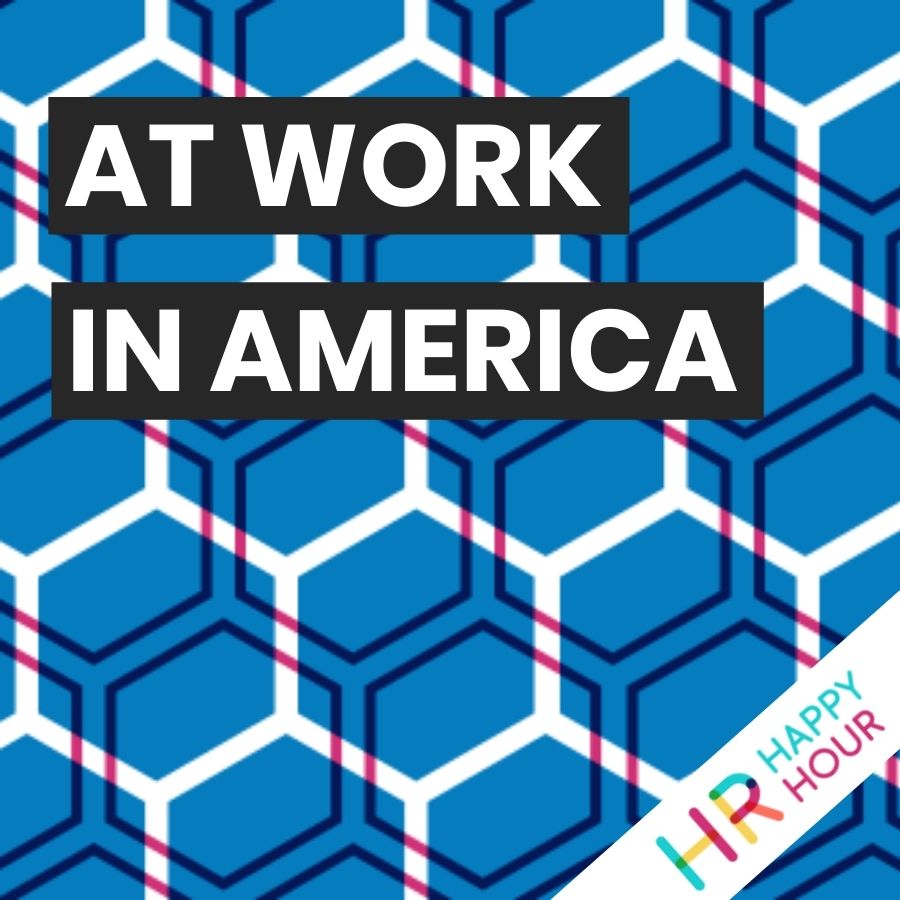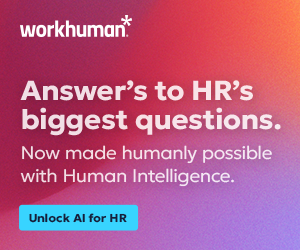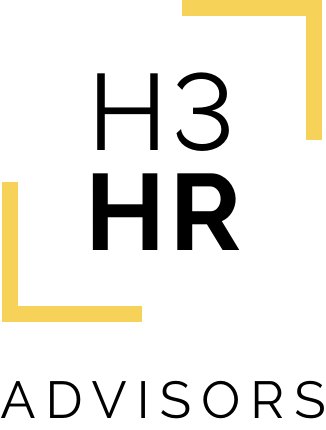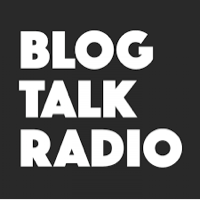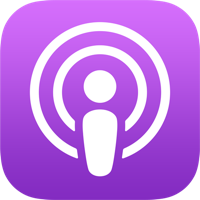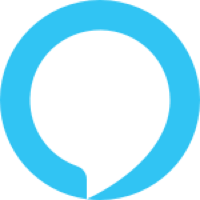How to Turn the Great Resignation into the Great Attraction
Hosted by

Steve Boese
Co-Founder and Chief Data Officer of H3 HR Advisors and Program Chair, HR Technology Conference

Trish Steed
Co- Founder and Chief Strategy Officer, H3 HR Advisors
About this episode
Hosts: Steve Boese, Trish Steed
Guest: Nagaraj Nadendla, SVP of Development at Oracle Cloud HCM
This week, we met with Nagaraj Nadendla from Oracle Cloud HCM, to discuss the Great Attraction trend as a continuation of the Great Resignation.
– What is the Great Attraction and how will it change the way organizations find talent?
– How organizations need to respond to these changes
– How technology can help with the transition
Thank you, Nagaraj, for joining the show today! Remember to subscribe to the HR Happy Hour wherever you get your podcasts.
Transcript follows:
Announcer 0:25
Welcome to At Work in America sponsored by Paychex. We welcome a wide and exceptionally impressive array of guests, business leaders, HR leaders, academics, practitioners, consultants and authors to talk about the most timely, relevant and challenging issues that are influencing the workplace today. At Work in America digs in behind the headlines and trends to the stories of real people making a difference in the world of work. And now here are your hosts, Steve Boese and Trish Steed.
Steve 0:59
Welcome to At Work in America withTrish and Steve. Today, Trish, we’ve got a great subject, we are going to be talking about the great attraction, as opposed to the great resignation. We’ve talked about the great resignation for months now. And it is a real thing, right? Many organizations are struggling to hire and to retain. I’ve talked to ad nauseum about the millions of people who are quitting their jobs every month for the last eight or 10 months. But when try to spin this a little bit forward today and talk about what organizations can do, to kind of keep their employees and attract new ones. So it should be great conversation.
Trish 1:34
Yeah, I’m excited. I think we have heard a lot about sort of the negative aspect of it. And so this is a much more positive. Like you mentioned forward looking and, and let’s get to it.
Steve 1:45
Our guest today, we’re really excited to welcome him to the show, an old Oracle colleague of mine from way back when Trish, this is great to see him again. Our guest today is Nagaraj Nadendla, he’s the SVP of development at Oracle Cloud HCM. He leads the development of cloud recruitment solutions including Oracle recruiting Antalya, which is how I met him I think originally way back when Nagaraj, welcome to the show. How are you today?
Nagaraj Nadendla 2:11
Thank you, Steve and Trish, it’s great to be here.
Steve 2:14
Great to see you. So first off, before we get into sort of the great resignation, slash spin forward to the great attraction, just maybe give us a little bit, that was the briefest of bio. So I do appreciate like your PR rep for giving us that Nagaraj. But maybe you want to share a little bit more about kind of what what your role is at Oracle, what you’re doing and some of the things that are happening there.
Nagaraj Nadendla 2:38
Sure, you know, I managed the cloud Recruiting Solutions, as you, you know, got the briefest of the bios, but my you know, my role entails, you know, product strategy, you know, organic inorganic investments, product management, development quality. As you’re aware, Steve, I spend a lot of time with customers prospects, and industry analysts and of course, you looks like us, yeah, we’ve had many conversations before. All of these, sort of help us inform us about trends and, you know, technologies. But at my heart, I’m a technologist, at the end of the day, you know, I love technology. I’ve been in, you know, traditional CRM domain supply chain, and now HCM for the last decade plus, so there’s a lot of patterns that I’ve learned from CRM and supply chain that also apply to particular talent acquisition, as you can imagine, so broadly, that’s been my background.
Trish 3:40
You know, I’m glad you mentioned that. And I, Nagaraj, because I think that that’s one area where HR professionals over especially the last decade have been starting to pay more attention to CRM being, you know, in supply chain and what’s going on. And especially these last two years, right, with the pandemic, we’re all a little more aware of supply chain issues, could you maybe just spend a minute or two and talk about that relationship between them a little more in depth, maybe if there are HR professionals out there who aren’t quite sure how it all sort of ties together and how you can like weave a thread through that?
Nagaraj Nadendla 4:13
Sure, you know, if you and there’s a obviously there’s a technology underpinning, but there’s also patterns, you know, specifically from CRM, if you think about it trash, you know, consumers are tracked, targeted and converted by brands, you know, it could be some of the most mundane products and services all the way to high end products and services in the consumer world. So, attracting talent, in many ways requires this, you know, same level of engagement. You know, being able to target the right talent for the right skills you’re looking for. So there’s many patterns and we’ve seen many customers, not only in the last two years for two, three years, but the adoption has only steadily increased over the last decade since I’ve been in this role. And, you know, and that’s one of the most interesting things about my job, how you attract consumers or talent, there’s a lot more confluence of that. But equally important as the technology is evolved, and the adoption is only increasing, as I’ve said.
Nagaraj Nadendla 5:24
Now, the second aspect, that’s interesting for me is also supply chain, you know, there’s, there’s to meet your demand, you need supply. And the supply of skill sets, particularly has changed. And, you know, there’s so much research out there that says, the skill sets required for gr jobs in the future, either they have to, you know, you’d have to develop them now. Or you’d have to acquire them somehow. Right? So talent optimization, or, you know, supply chain, demand planning, all these concepts come into play. So if you think about traditional supply chain optimization, you know, there’s models that are just in time inventory management models. So whether, you know, exactly that is adopted or not having a pipeline, and I’m sure you’ve heard this at the talent acquisition world, having a pipeline readily available, to slot them in, you know, particularly talent with skills as your needs evolve and arise. And having that visibility for CEO charros and talent acquisition leaders in organizations today, it’s almost table stakes today. Right? So there’s these patterns that come into play and having been in multiple domains that, you know, I feel like and we at Oracle feel like it’s a distinct advantage.
Trish 6:52
I love that answer. Thank you for sharing that definitely about the patterns of behavior, because it isn’t always very different between being a consumer, and then being someone who’s a potential employee, candidate. Future candidates, so yeah, nice time.
Steve 7:07
Now, good. As you mentioned, you spent a lot of time with customers, right? And so you’re responsible for the recruitment solutions or talent acquisition solutions, however, we want to turn those. So I imagine many of those conversations you’ve had over the last Well, a couple of years, right, certainly have been around this great resignation slash. I want to use that metaphor, the difficulty in acquiring the kinds of people that the organization may need with the right kinds of skills, as you mentioned building that pipeline, maybe Nagaraj, if you don’t mind, just generally maybe share what you’re hearing from the customers. And then we can get into what are some of the things that you slash your teams recommend that these customers can do to try to try to combat this great resignation that we’ve been talking about so much?
Nagaraj Nadendla 7:55
Yeah, I almost want to go back to the term you were trying to avoid Steve. I know, you know, yep. Yeah, you know, but I think it’s been a gathering storm, it only got worse with the onset of COVID. And it upended lifestyles and, you know, professional lives and personalized in many ways. So I would say that gathering storm, you know, with the effects of the pandemic, right, you know, it created more awareness, I would say, to talent in general about their own needs and blending, you know, a, the work life balance elements and the impacts that had I think it’s, you know, I was looking at the ESA Chairman report the other day. You know, the report suggests that in 2021 4 million jobs, people have left 4 million jobs on a on an average basis monthly, which is almost like 100%, larger than what it used to be previously. Right. So, I think, more than off, at least from what we’ve seen more than office workers that deskless workers probably ever had a significantly more impact on them, you know, first the shutdown, then, you know, the recovery, the fix and starts that we’ve had, and now things are, you know, hopefully getting back to a more normal pace.
Nagaraj Nadendla 9:23
Many of our customers, you know, particularly the deskless workers, the biggest challenge has been, I just can’t find talent. So, there are solutions for those for sure. But, you know, I think it’s, and it’s an evolving story. And if you kind of flip that and look at you know, our own research the Oracle 2021 Ai, Work Research 80% of the people are negatively impacted in various ways. Sort of being at home, in the confines of home, you know, professionally working at etc. It brought out I think aspects of their own, you know, feeling stuck in, in their profession, in their career and in what they’re doing. I think it’s just made it whatever we were feeling innately, it just brought it to the fore, you know, emphasizing and accentuating, you know, many of the traditional problems, you know, whether it’s career development, mobility, opportunities to develop skills, many of those things, I think, just played themselves out and became important.
Trish 10:37
You know, as you’re talking with your customers, are you hearing that there are certain areas that you just mentioned, right, with mobility and, and skills and so forth? Is there one or two of those areas that seems to be kind of moving to the forefront for the customers in terms of priority? Or are you seeing more of an even spread around different approaches to this approach to attraction of talent?
Nagaraj Nadendla 11:04
I think skills have definitely, we see a lot more interest in skills and skills based. I would say, you know, going back to the example I was talking about with supply chain skills, base skills management, in general, getting an inventory of what skills do I have within the organization? What skills do I need to develop, and helping their talent with skill development, whether it’s through, you know, there’s many euphemisms that are used today, you know, tours of duty, or gigs, or short term opportunities and assignments to, to work on to to help develop. So I think there’s definitely more of that, that we see that surfaced. See, and of course, you know, our own investments are also tracking to you, we did a just before the pandemic in 2019, we did a at Oracle OpenWorld, a private, in a private setting with some of our strategic customers, we did a conversation about and you know, Deloitte has some research about this, that, increasingly, skills will become more and more important, and fast forward three years, we’re talking about it, and Oracle has made investments and you know, we kind of we ourselves at the time, place some bets and was better coming to fruition. And our customers are seeing that. And, you know, I’m sure, as you see our own products, while you’ll see more and more of that.
Trish 12:36
That’s interesting, Steve, and I were just talking yesterday, with a CHRO, of a midsize company. And we were talking about that very thing where, like, there’s this time to, which is often a decade of, you know, from an idea to actually being something that, you know, organizations are implementing on a regular basis. And it sounds like, though, you know, at Oracle and we, we both seen this, it’s a much faster time, from innovation to actually working with your clients, and implementing some of those solutions. So do you have any like, I don’t know, little tips or tricks, right? If you’re someone who’s in human resources, and you’re feeling like, I want to maybe try some of these things, right, some of these new approaches with skill development, for example, as I’m trying to attract people? How would they approach senior leaders who might be sort of reluctant to make quick changes? Because we’ve all had to make some very fast changes? So are you getting any feel for how they might approach those conversations?
Nagaraj Nadendla 13:43
Yeah. And by the way, we have these conversations internally as well, or Oracle? I’m sure you’ve heard of before. I think one approach that we’ve seen customers take is getting a sense of what skills inventory do I have on hand today? And also based on business priorities, what are the skills we need to develop that will drive the tools technologies and other things that they adopt? And it’s, so there’s a technology underpinning, but I think that you know, one approach as I said, as I get, let me get a sense of what I have today, right? And then how do I march towards what I need, can be derived from that. The others, you know, and depending on the size of the customer, the amount of effort it takes to get to getting an inventory of all the skill sets, they might start in certain critical areas first, to gain the problem or to evolve the solution per se. One other approach we’ve seen is customers, beginning to while they work on getting a sense of the inventory of skills they have Let me start with, again, in a limited fashion, as they acquire talent, start tracking the skills, you know, you might not do anything with it immediately. But let me start collecting what skills they have. So that it can aid in other talent processes, particularly managing the career aspirations of the talent you’re hiring in the future.
Trish 15:21
Thank you. I love that suggestion. Because I think sometimes it’s very overwhelming, when you start to think about, am I going to do the skills inventory for our entire organization? Right, I like that idea of maybe just start with that first group, right? The people that are coming in right now. And you can always work backwards, right are into those critical areas of the business and, and go up from there. So great, great suggestions, thank you.
Steve 15:43
One of the things this is maybe slightly adjacent to the pure kind of talent acquisition technology, Nagaraj, you’ve worked it around for quite a while, and we’re familiar with is, but a lot of the AI technologies now really help by illuminating or surfacing both skills and then opportunities, right for employees. So they, they can one of the things we talked about for a long time in HCM Tech, I mean, forever, right was create these systems that had these really robust capabilities for employee profiles. But yet we couldn’t get employees to fill them out, or populate them, or populate them accurately, they often didn’t really feel like, well, why should I do this, this is silly, etc, etc. And there’s some maybe merit to that. But what we’ve seen over the last few years is better technology, AI technology that can help surface skills that are maybe, maybe the employee probably has or could develop fairly easily. And then also service developmental opportunities, right for them to develop these skills. And then that would align with hopefully, both right the needs of the organization, right to meet their business objectives, and also what the employee desires him or herself, right, from a career development perspective. And they’ve come a really, really long way. And like, I’ve seen some demos of this stuff. And it’s super impressive, like what these technologies can do.
Nagaraj Nadendla 17:06
They do, Steve, and you know, you touched on an important aspect, as much as talent acquisition, you know, is about external talent. It’s equally internal talent as well, in many organizations. And you’ve seen this in the last decade, the amount of emphasis on internal mobility has only grown. So I’ll do a shameless plug in I, you know, these conversations, I typically don’t plug in Oracle products, but we’re one of the only renders that actually enables employees to import their LinkedIn profile that drives all of the town processes. So we, it and it with that, you can start getting a sense of what skills do I have? So rather than, you know, while organizations can do this themselves, it can also start, you know, it’s like, both sides need to meet each other in the middle, right. So individual employees can also start making the organization aware of here’s the skill sets I have, right, of course, organizations need to give them reasons to do that. And that’s the onus on the employers, but equally important, the onus is on a on a site employees, let me let me make the organization aware of who I am through this profile. And from that you could AI which we do artificial intelligence and machine learning can derive the skill set, which is an employee can confirm, yeah, I’ve got this. And then that can drive, you know, short term opportunities, gigs or, you know, tours of duty, whatever, euphemisms we use to continue to develop and then the opportunities internally can be matched automatically, without me looking. So I think these technologies are here today. It’s happening as we speak. It’ll only accelerate, as I see, you know, in the next three to five years.
Trish 19:00
I think one thing that’s interesting about that capability you just shared is that when you pull something from LinkedIn, often people over the years have really made their LinkedIn profile, so robust, beyond what they’re maybe their last position or two entailed. They might have done volunteer work, they might work, you know, in their church or in the local community center, other other things outside of what you would consider even they’re sort of doing air quotes, like normal job skills. And to me that’s really important to to be able to capture skills that the company might not have had access to before, that aren’t even job related. So that when you do have these situations where you’re short staffed, maybe it isn’t about moving someone, you know, kind of up the ladder, if you will, it is about a completely different position that you didn’t even realize they had skills to perform that you can start that calm sation I know in HR we tried that years ago. But it was always, you know, something we did on paper, or by calling around, you know, who has someone who might be able to do this random sort of skill. I do think that when I’ve, you know, seen what you’re doing at Oracle, I love that you can pull in beyond just kind of the job description skills, if you will, and get, get that whole picture of the person.
Nagaraj Nadendla 20:25
Absolutely. And as we expand the number of domains that we have this skills, ontology, about over time, it becomes, you know, you can start to attract the adjacencies, if I’ve got the skills, a lot of times, particularly Wagner, and this is a problem on both ends, both for employers and individuals. What could I be doing with my skills beyond what I think I do? Right? Or I’m good at. And if there’s a system, or there’s recommendations, much like products, right? You go to Amazon, or any of the consumer sites, you didn’t think about it, but somebody can say, hey, people, like you are also looking at these other products. So maybe people like me with these skill sets could also be good at other opportunities, you know, career choices, etc. And that discovery can lead to, you know, very positive outcomes, both for employers and employees.
Trish 21:22
Yeah, I agree. I think what what I’m sort of interpreting that as it really helps the HR professional, or the employee ultimately tell a story about what it is they might be able to do that you just would never consider. It just makes connections that were definitely not there years ago, or not very easily. Steve knows the story, I had a when I worked in health care. At a children’s hospital, we had a person who had been a floor finisher for about 22 years at the time. And he did a lot of work in his church. So he was comfortable standing in front of larger groups of people speaking, that sort of thing. And he also loved writing. And what we wound up doing is we were having a big issue at the time, communicating well, with the entire housekeeping staff of several 100 people, it turned out that his skills outside of work, kind of his own time went up being what we actually once we figured it out took a long time. Once we figured that out, he became sort of the voice of that entire 200, you know, person department and worked hand in hand with me and with the HR team and was writing he was you know, at the time we did newsletters and things like that internally in the hospital, but it was just a an example, where had we had some technologies like you all are offering now, to sort of make those connections. You don’t even know what talent you can really tap into, that people have.
Nagaraj Nadendla 22:52
I absolutely agree. I think a lot of times, there’s, if you look at profiles, you know, if I would reckon I’m looking at 50, and that the extracurricular activities are this, this little to focus on that, right. But a lot of times as you just outline, it says a lot about you as a human being, or as an individual who’s juggling many other things, you know, you’re doing a professional job, you’re a parent at home, you know, tending to young kids, but you’re also running marathons, it says something about you as a human being right? A mini marathon or marathon, whatever it is, your motivation, you know, can be a significant contributor to success, curiosity, there’s many things that, you know, as you said, a more complete profile says about you, then, you know, just say, I have this degree, and I’ve worked at this company.
Trish 23:46
Right, nd I think that’s the big shift, you know, we’re truly able to start seeing the whole person. And to celebrate that, which, again, it’s all sort of, you know, brings in belonging, it makes the person feel more connected to the company and to their peers, and to their bosses. And, you know, so it, just having those skills made readily available through technology actually does so much more than just fill that position, which is how we’ve always thought of it. So I do love the direction that you’re all going with that. And I think you’re making it much easier for leaders to see those connections.
Nagaraj Nadendla 24:23
And equally important, I would say kudos to some of our customers, and you know, and many prospect conversations that we participate in. As as much as we are innovating and introducing these things. There’s many forward thinking organizations, whether it’s on, you know, diversity and inclusion or you know, corporate social responsibility, many things that are, have always been important, but they’re, you know, the importance only went up in the last few years. So, you know, we’re thankful for the kind of customers and the thought leaders that we interact with.
Steve 25:00
Nagaraj, as I’m glad you mentioned that about some of these other factors that are important in this idea of the kind of combating if you will the great resignation and trying to spin forward to maybe the great attraction I, before the show. I wanted to just like, I’m not sure I’ve seen that phrase really. So I, I just do what you do, right? I’m like, Oh, just Google the great attraction. There’s really not too much out there yet on this, I found one interesting piece that was from McKinsey was pretty good. It was pretty long, too. But there’s something that they had in there when they were discussing these ideas. And primarily, it was about really, you know, to combat the great resignation, you really ought to know why people are resigning in the first place. And we could talk about exit interviews and things like that.
Steve 25:42
But the reasons why people were saying that they were leaving jobs, according to this one bit of research, versus what the employers and the leaders thought why people were leaving were different. There’s, and that’s classic, right? There’s always, no matter what you survey on, there’s always a disconnect between what employees say or feel or think and versus what leaders tend to say or feel or think. But here was kind of the the poll quote, and I love Nagaraja, you’ve made me think comment on this too, as well. Was that employees in this in this great resignation, this pandemic great resignation, tended to focus more on relational factors. So things like do I fit in the organization? Do I see my my role? Do we have a purpose diverse diversity, equity, inclusion is another good one now garage, right, more relational factors and elements, whereas employee ers, At least in the first half of the pandemic, anyway, tended to focus more on transactional factors. Right. So So we saw a lot of stay bonuses, retention, bonuses, sometimes even temporary uplifts in wages, especially for frontline workers, right, like hazard pay that then got rescinded, you know, and the kind of point was that, if you’re focusing on transactional factors, the employee just feels like my relationship to the employer is just a series of transactions. And I’m going to go, I will be happy to leave to some other employer who might value me a little bit more than just a transaction. So anyway, that was the takeaway from this, this piece, and I thought it made a lot of sense, an average, I don’t know if that’s something that’s come up with your work with customers, or, or even your own kind of your teams. Right, you’re managing lots of folks there to have gone through a lot, too. I love your thoughts on that.
Nagaraj Nadendla 27:22
Yeah, you touched on many things. And I think all of these are factors. You know, if I go to ER, right, the ER doctors first responses, I need to, you know, for whatever reason, if I go in, I need to make sure that they survive, for me to take care of the long term, you know, helps sustain long term health, right. So I think we’ve, as you absolutely rightly said, in the research points out, there’s the oh my god, you know, if I’m a retail store, I need personnel, I’ll do whatever it takes, it becomes transactional. But then you see the pattern repeat itself, then you go, I’m doing something wrong, I need to be more thoughtful. Not that we weren’t. But I think it transitioned into, you know, what are the durable ideas, solutions that I need to put in place? And you know, whether it’s deskless workers are professional workers, I think increasingly, whether it’s, you know, whatever, the latest generation, generation Z, all of us as human beings, we want to connect with the mission, right? What’s the organization’s mission? Which goes back to corporate social responsibility? You know, do I connect with my team, you know, you start with the big and then you start looking at, you know, smaller rocks, all of them needs to make sense in some way, you know, that that relationship, you’re talking about connect connective tissue? With the organization with my team with what I do? Is it satisfying my personal curiosity, professional curiosity, all of these need to fall in place now, will it? Is this applicable for all professions? Probably not. But I think it’s a I wouldn’t disagree with that at all.
Steve 29:08
It’s fascinating, why, I think you mentioned earlier Nagaraj, some of the things that were always kind of important, but maybe in I don’t know better economic times, we were at full employment pretty much right before the pandemic, you know, we could kind of, I don’t know, paper over some of these things. And the pandemic itself is just, you know, we’ve talked about it a little bit. It’s really just for so many people to really reevaluate the their position, their idea of what how work fits into their lives with what they feel like is meaningful in work and outside of work. And so that I think what employers employers really do have to think differently beyond the transaction, I guess, is the way to say it beyond just comp and then etc, etc. I mean, we’d go on and on. I was reading a piece about some big tech company trying to drag people back into the workplace and they don’t want to come and The tech company I’m not going to name them was like, oh, no, but free lunches back, you know, kind of thing. And I don’t know, the employees are just not super interested in that right now.
Nagaraj Nadendla 30:11
Even compensation, you touched on, we touched on compensation. Many times, I think, you know, one of the patterns we see not only with customers, but even us internally, it only goes so far, you know, at the end of the day, top talent will always find opportunities no matter why. So it’s got to be more than that. So if you make x and you know, 105% of that x, you make someplace else that 5% is not as meaningful as it was before, I would say. So I think one of the things I always This is advice I give to my own kids, and I tell everybody, if I hire somebody, they’ve given me enough reason to take a chance with them. And I think, you know, generally it’s been sort of employer to employee, but, you know, I think it’s reversed now, employers have to equally think along those lines to say, I need to give them reason to be with me. Right. So I think that it’s become a lot more balanced. And maybe it’s a little imbalance in more in favor of the, you know, talent. But I think it’s an important use. In my mind, I keep emphasizing that, but everybody. Yeah, that’s a great point,
Trish 31:25
I think it’s a very good point, I think to the thing that might be different than pre pandemic is that if you were in a leadership role, really, at any level of management, you know, you’re sort of, I don’t know if Todd is the right word, but it’s just a cultural thing that you you tend not to share with your team, when there are pressures above you, when you are maybe struggling with things at home, when there are things that are scaring you, or making you anxious or making you depressed, right. And I do think that the pandemic has sort of leveled the playing field a little bit, just in how we all are dealing with work, right. Just because I have a leader title doesn’t mean that I have everything under control, you know, whether it’s my work life or my personal life. And so I think to that relationship is much more open, you start to see your leaders as people and not as just the title of leader. And so whether they’re a CEO or a mid level manager, it doesn’t much matter. I think, too, if if the leaders and managers feel more comfortable sharing, that you know what I’m having a day to day where I’m struggling, I’m having a day where I can’t really get it all done. I it just makes that human connection so much stronger. And I don’t feel like we’re hiding behind. I don’t know those titles any longer.
Nagaraj Nadendla 32:46
It really has. Yeah, I could do more. I think. If anything, I think that has released from my own personal experiences with my teams. And as I see other leaders within, you know, customer organizations that I interact with. It has, if, if the, if we as a humanity had to deal with COVID, I think we’ve sustained that only because the mask has fallen. Otherwise, it would have been very, very difficult, I would say.
Trish 33:18
Right, and I think we can learn from employees, and we can learn from the younger generations, too. I don’t know about you, you mentioned you had children, I think that, you know, having this additional time with our kids hearing their perspectives more than what we would have consumed before, right. And now that we’re kind of going back to a more transactional, even within your household, right, as people get back to their normal school schedules, or normal sports schedules or whatever. The one thing that I’ve taken away from it is that I definitely listen to my children much more than I did before, on real substantive issues, and how to handle things. And they’ve watched me deal with work the last two years in a way they never had before. They have all kinds of great ideas. You know, they’re teenagers, but still, I think to it opens your mind like, Okay, I’m actually going to approach my work differently. Because I’m taking advice from an 18 year old, you know, and it all makes sense suddenly. So, just some good advantages, I think of what we’ve gone through.
Nagaraj Nadendla 34:23
Absolutely. I couldn’t agree more. I think there’s, you know, I can speak to my own household, there’s a lot more dinnertime conversations, more substantive conversations, more open ended conversations than ever before. So you know, I every challenge in life, you know, we’ve seen the great recession, we’ve seen, you know, other challenges in our own lifetime, both economic and non economic. Every challenge is an opportunity. And I think I take a few steps back every once in a while to think about oh my gosh as humanity Across the globe, we’ve survived COVID not knowing anything two years ago to where we are talking about, you know, the, the demand supply picture reversed. And, you know, two years ago, I couldn’t have imagined that we’d have be having this conversation because, you know, we’re looking at the economy years ago.
Steve 35:20
I was driving all over town, China by hand sanitizer like amania.
Nagaraj Nadendla 35:24
There you go. We had different priorities back then. Right, yeah. But it’s the human potential at the end of the day, that keeps me very optimistic in life in general.
Steve 35:37
We could probably go on and on and on, which I won’t, I’ll be merciful here on Nagaraj this time and not not let that happen. But I think here I’m gonna set up like the next conversation, maybe we need to have perhaps now or maybe we’ll grab one of other our friends at Oracle, which is this and I’m just teared up, we’re going to be to go though, this whole hybrid work thing, right? People starting to come back on this hybrid basis, I’ve read a bunch of stuff on it lately about how he bought you better manage that very carefully, very intentionally, and be aware of what that kind of means in the organization for things like opportunities to work on high profile projects, opportunities for promotions, you know, FaceTime, quote, unquote, with the leaders of the organization itself, that’s a really big, really big deal. And perhaps, I don’t know, maybe not being talked about as much as it should be. So I feel like, as we talk about attraction and resignation as well, I think this whole what that kind of design of work is going to shape up to be and how that’s managed. It’s going to be a really important issue, too.
Nagaraj Nadendla 36:39
I think we’re, you know, the the book is being written as we speak about, but you know, organization, including Oracle, we’re just beginning to reopen. We’re learning. I’m sure there’s a lot to talk about. On that front.
Steve 36:54
Yeah. Good stuff. Now, it’s great to see you, I really appreciate you taking the time with us. It’s great to catch up.
Nagaraj Nadendla 37:02
It’s great to catch up. You know, the last thing I’ll say, I just literally late last week. I saw this a few years ago, delight put out some research, you know, they shared this with our customers at openworld, about multi generational workforces. And boom, last Friday, there was a report that retired personnel are coming back to work, you know, to we just, it’s still evolving story. Right? Yeah. And it has many implications to you know, whether they become temporary workforce, or they become employees again, having, you know, Generation Z working with retired personnel who came back to work, all the generations in between, oh, my gosh, that’s a fascinating story evolving in front of her eyes.
Trish 37:52
It’s definitely an exciting time. And I think lots of opportunities to learn from, you know, generations, especially if they’ve taken some amount of retirement and come back, right. They bring a whole wealthy perspective that a younger person might not have, have thought about from a work perspective. So yeah.
Steve 38:12
Great stuff. So here’s two things I want to say. First of all, again, thanks. Nagaraj, SVP of development, Oracle Cloud HCM. Great to catch up, great to talk about what’s going on in the world of work, what’s going on with the great attraction and the great resignation, what’s happening with some of your customers, it’s been awesome to catch up. You can go to oracle.com/hcm for tons of information, resources, thought leadership pieces, details on some of the product stuff that we talked about just it’s a great, great resource for not just what’s happening with Oracle HCM technology, but what’s happening with, you know, human resources, the world of work in the workplace. It’s a great resource. I literally I go there so often when I type the letter O into my browser, it auto fills oracle.com/ I’m not kidding. I did it this morning. It fills in oracle.com/hcm for me when I typed the letter, Oh, I love that. All right, good stuff. So again, thank you Trish, thanks so much. Great to catch up. And thanks for listening to the HR. Well, I said it wrong. Should we have a new show name? I was about to say thanks for listening to the HR Happy Hour Show.
Trish 39:18
No, say the new name.
Steve 39:19
Thanks for listening to At Work in America Show on the HR Happy Hour Podcast Network. See all the show archives at HRHappyHour.net. Thank you so much for listening, and we will see you later.
Transcribed by https://otter.ai
Talk to us
If you want to know more about any aspect of HR Happy Hour Media Network, or if you want to find out more about a show topic, then get in touch.

